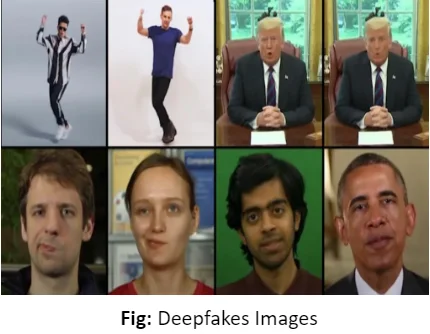![]() June 11, 2024
June 11, 2024
![]() 2677
2677
![]() 0
0
Deepfakes are synthetic media where a person’s face or voice is digitally altered using artificial intelligence, making it appear as if they are saying or doing something they never did. These convincing videos and audios offer benefits in entertainment, healthcare, and education but also present significant challenges. Issues such as misinformation, privacy violations, and political manipulation raise concerns about the ethical use and potential misuse of this technology.

| Must Read | |
| Current Affairs | Editorial Analysis |
| Upsc Notes | Upsc Blogs |
| NCERT Notes | Free Main Answer Writing |
<div class="new-fform">
</div>
Latest Comments